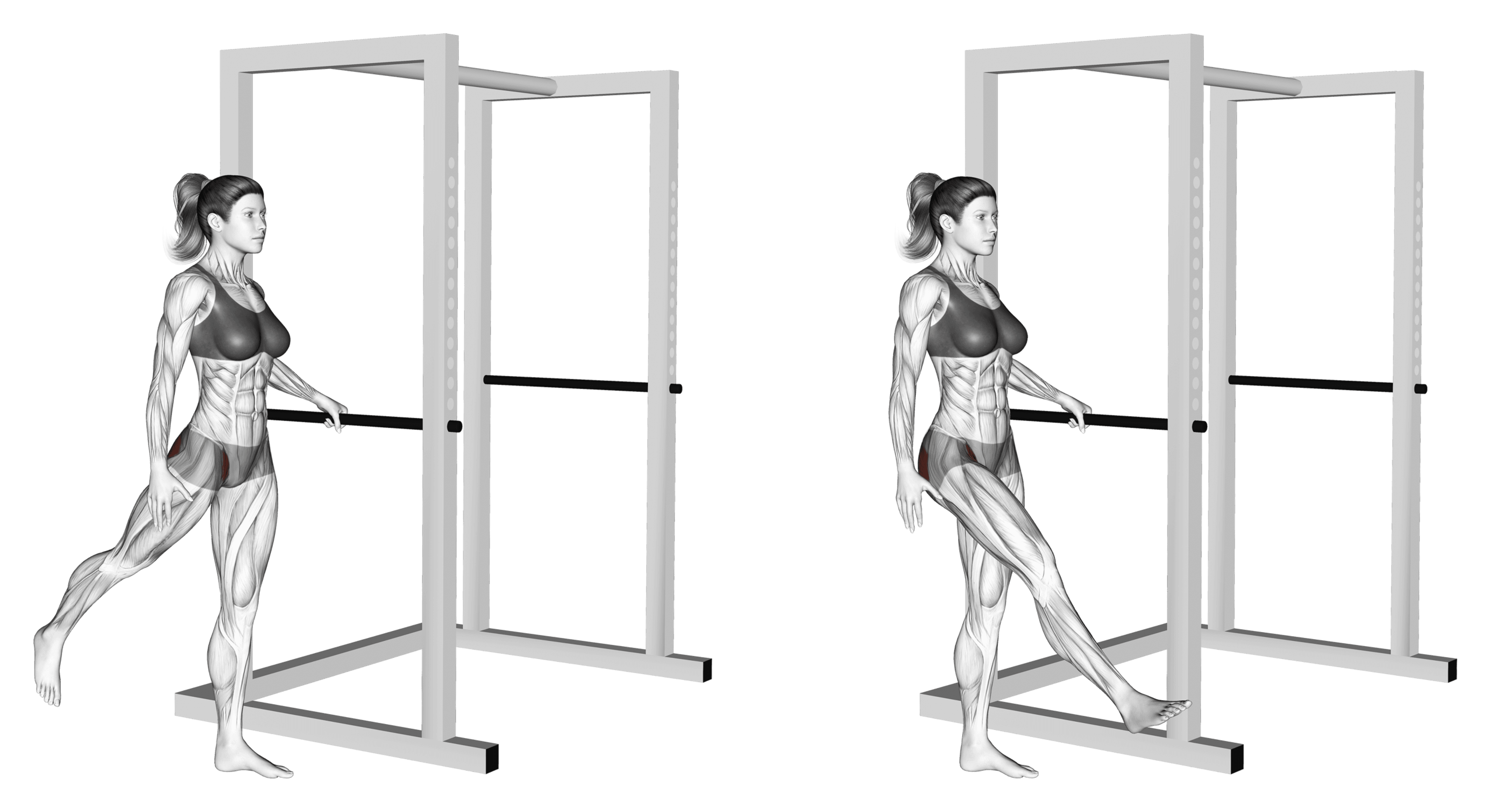Forward Leg Swing

Overview
- Primary Focus:
- Upper legs.
- Equipment:
- Body weight.
- Difficulty:
- Beginner.
General Information
Forward Leg Swing is an isolation exercise that primarily targets the hip flexors and also engages the glutes. It is a beginner-level movement used as a dynamic warm-up to mobilize the hips and hamstrings while preparing the lower body for squatting, running, or change-of-direction work.
The controlled swinging motion opens range gradually and improves coordination. It works well in small spaces and requires only body weight, making it easy to integrate into home or field sessions before heavier training or sprints.
Emphasis shifts slightly based on torso angle and how far behind you extend the leg. Focus on smooth arcs and stable posture rather than chasing maximal height, which tends to drive compensation and reduce warm-up quality.
Use it for activation before strength or field work, or between sets of lower-body lifts to maintain mobility. Pair with Side to Side Leg Swing for a complete plane-of-motion prep sequence.
Muscles Worked
- Rectus Femoris
- Primary
- Tensor Fasciae Latae
- High
- Gluteus Maximus
- Medium
- Gluteus Medius
- Medium
- Sartorius
- Medium
- Semimembranosus
- Medium
- Adductor Longus
- Low
- Biceps Femoris
- Minimal
- Semitendinosus
- Minimal
Instructions
- Stand tall next to a wall or post for balance. Engage your core and set a neutral pelvis.
- Swing the outside leg forward and back in a comfortable arc, keeping the knee mostly straight but not locked and the toes pointed forward or slightly up on the forward swing.
- Keep the torso tall with minimal lean and avoid rotating the pelvis; let the hip move freely while the trunk stays stable.
- Increase range gradually over the first few reps, staying within a pain-free motion and smooth tempo without jerking at end range.
- Breathe steadily and keep the standing leg active through the foot to maintain balance and hip alignment.
- Complete all reps on one side, then switch. Shake out tension and reset posture before starting the next side or set.
Common Mistakes
Injuries
Forward Leg Swing is a low risk exercise when performed with proper technique.
Avoid forcing range or leaning back to kick higher, which can irritate the lower back or hamstrings. Build amplitude gradually and keep the trunk quiet for a clean warm-up effect.
If balance is challenging, use a light hand on support and shorten the swing. Progress by removing support, increasing reps, or adding a small pause at the top of the forward arc.
Stop if you feel sharp hip pinching or hamstring strain; reset posture and reduce range to stay symptom-free.

Frequently Asked Questions
- Q: When should I use this in a warm-up?
- Q: How high should I swing?
Only to a range you can control without pain or compensation. Height should build naturally over 5-10 reps as tissues warm up.
- Q: Should I hold on for support?
Yes if balance limits range or quality. Light support lets you focus on smooth hip motion and posture.
- Q: How many reps per side?
8-15 smooth swings per side works well for most warm-ups. Use fewer, slower reps if you feel stiff and build range gradually.
Overview
- Primary Focus:
- Upper legs.
- Equipment:
- Body weight.
- Difficulty:
- Beginner.